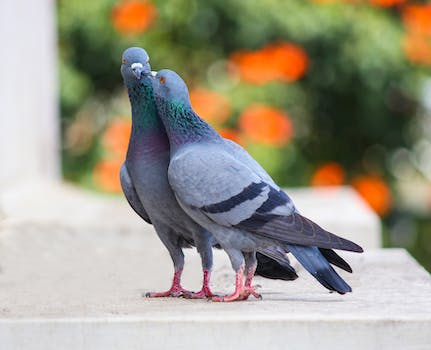-
Table of Contents
- The Meaning Behind “Birds of a Feather Flock Together”
- Origins of the Phrase
- Implications in Social Settings
- Scientific Basis
- Implications in Diversity and Inclusion
- Conclusion
- Q&A
- 1. Is there any scientific evidence to support the idea that “birds of a feather flock together”?
- 2. What are some examples of how the concept of homophily plays out in social settings?
- 3. How can organizations promote diversity and inclusion in the face of the “birds of a feather flock together” phenomenon?
- 4. What are the potential negative implications of people only associating with others who are similar to themselves?
- 5. How can individuals balance the desire to connect with like-minded individuals while also embracing diversity and inclusion?

Have you ever heard the saying “birds of a feather flock together”? This popular proverb suggests that people with similar interests, characteristics, or backgrounds tend to associate with one another. But what does this really mean, and is there any truth to it? In this article, we will explore the origins of this phrase, its implications in various contexts, and whether there is any scientific basis to support this idea.
Origins of the Phrase
The phrase “birds of a feather flock together” has been around for centuries and is believed to have originated from the idea that birds of the same species tend to fly and roost together. This behavior is commonly observed in nature, where birds often form flocks with others of their kind for safety, companionship, and mating purposes.
Implications in Social Settings
When applied to human behavior, the saying suggests that people with similar interests, values, and personalities are naturally drawn to one another. This can be seen in various social settings, such as schools, workplaces, and social groups, where individuals often form cliques or circles based on shared characteristics.
- High school students may gravitate towards friends who share their hobbies or academic interests.
- Colleagues in a professional setting may bond over common goals or work styles.
- Members of a community organization may connect through shared values or beliefs.
Scientific Basis
While the idea that “birds of a feather flock together” is largely anecdotal, there is some scientific evidence to support the concept of homophily, which is the tendency for individuals to associate with others who are similar to themselves. Studies have shown that people are more likely to form relationships with those who share their attitudes, beliefs, and behaviors.
For example, a study published in the Journal of Personality and Social Psychology found that couples who are similar in terms of personality traits, values, and interests tend to have more satisfying and long-lasting relationships. This suggests that there may be some truth to the idea that like-minded individuals are naturally drawn to one another.
Implications in Diversity and Inclusion
While the concept of “birds of a feather flock together” can foster a sense of belonging and camaraderie among like-minded individuals, it can also have negative implications in terms of diversity and inclusion. When people only associate with others who are similar to themselves, it can lead to homogeneity and exclusion of those who are different.
It is important for organizations and communities to actively promote diversity and inclusion by encouraging interactions among individuals from diverse backgrounds and perspectives. By fostering a culture of openness and acceptance, we can break down barriers and create a more inclusive society where everyone feels valued and respected.
Conclusion
In conclusion, the saying “birds of a feather flock together” captures the idea that people with similar characteristics tend to associate with one another. While there is some truth to this concept based on scientific research, it is important to recognize the importance of diversity and inclusion in fostering a more equitable and harmonious society. By embracing our differences and celebrating our similarities, we can create a more vibrant and inclusive community where everyone has a place to belong.
Q&A
1. Is there any scientific evidence to support the idea that “birds of a feather flock together”?
Yes, studies have shown that individuals are more likely to form relationships with those who are similar to themselves in terms of attitudes, beliefs, and behaviors.
2. What are some examples of how the concept of homophily plays out in social settings?
High school students forming friendships based on shared interests, colleagues bonding over common work styles, and community members connecting through shared values are all examples of homophily in action.
3. How can organizations promote diversity and inclusion in the face of the “birds of a feather flock together” phenomenon?
By actively encouraging interactions among individuals from diverse backgrounds and perspectives, organizations can break down barriers and create a more inclusive environment where everyone feels valued and respected.
4. What are the potential negative implications of people only associating with others who are similar to themselves?
Homogeneity and exclusion of those who are different can result from people only associating with others who are similar to themselves, which can hinder diversity and inclusion efforts.
5. How can individuals balance the desire to connect with like-minded individuals while also embracing diversity and inclusion?
By seeking out opportunities to engage with individuals from diverse backgrounds and perspectives, individuals can expand their social circles while also fostering a more inclusive and equitable society.






